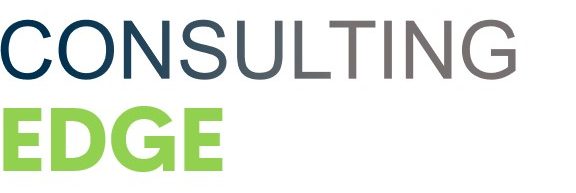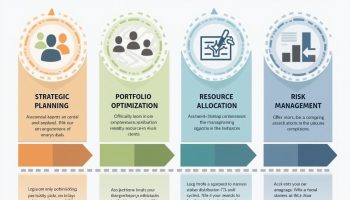The Project Management Framework helps project managers plan projects strategically and methodically, meet deadlines, and, most importantly, meet or exceed the needs of their customers. In a nutshell, a project management framework lays out the charter, scope, and purpose of a project.
By identifying and outlining the procedures, activities, and actions that need to be done to run the project from start to finish. As a result, a project management framework comprises a group of procedures and methodologies that work together.
What is a project management framework?
Project management is the planning, organizing, and systematically controlling resources to meet the project’s goals and outputs. A project management framework is a collection of standard project management procedures, templates, and tools that are used to start, plan, run, control, and finish a project.
This structure makes it easier to make decisions, communicate, and coordinate across all projects in a portfolio, which helps with governance and management rigor. This leads to better use of business resources in the long run.
What are the critical components of the project management framework?
First stage is Initiation:
When you start something new, this is the first step. This is when the project begins. Brainstorming, research, feasibility analysis, and interviews with stakeholders are all part of the process of starting a new project or business. The start stage should be focused on determining which critical components are necessary to carry out the project.
Second stage is planning:
The second step is to plan. Here, people planning the projects need to be very specific about who will be involved, which teams will be affected, and how they will measure progress and success.
Third stage is Implementation:
This is the third stage. This stage comprises the creation of deliverables as well as the specific duties that each member of the team is responsible for for the project to move ahead successfully.
Fourth step is management:
During the fourth step, the administration needs to be done. Because this stage is all about keeping track of the project’s progress at each milestone, it’s called this stage of the project. Again, stakeholders should be told about the most critical issues.
Fifth stage is evaluation:
The fifth step is to think about what you think. Here, project leaders and team members will look back at what went well, look at any setbacks or problems, and figure out how to fix them with all the people who are involved in the project, including customers and manufacturing partners.
The advantages of using a project management framework include the following:
Reliability
Reliability is one of the most important things about the PM framework. It makes sure that projects are done the same way every time. Due to the fact that a Project Management Framework places a lot of emphasis on careful project preparation, the whole process is very well-defined and consistent. Consistency also helps the project be more accurate and precise.
Cooperation
A project management framework makes it easy for all of the people who are involved in the project to be involved from the start to the end. It’s clear that this helps project managers and their stakeholders work together. Therefore, it speeds up the project and improves the quality of the finished product a lot, which is why this is a good idea.
Transparency
As soon as the project starts, a PM framework lays out and explains the project’s scope to all the people who will be working on it. This eliminates the chance of uncertainty and ambiguity, making sure that the project goes as planned. In addition, because each team member knows what their job is at each level, the results are more cohesive and better.
Communication
Communicating with each other is very important for a project. The Project Manager, the PM team, and the people who are going to be a part of the project all need to keep in touch with each other at all times. Each level of the PM framework asks them to work closely together to figure out the scope and goal of the project and all the tasks that go along with it. The more communication there is between all the people who work on the project, the better it will go.
Durability
Because everything is set up and ready in advance, a Project Management Framework is all about efficiency and continuity. People may be able to work on projects from start to finish because of the planned integration. Even though it helps new project management team members learn faster, it improves the skills of more experienced ones.
In addition, team members can quickly move to the next project because the fundamental structure stays the same. This way, when a project is done and a new one starts, the team members can quickly move to the new project.
A comparison of project management framework and project management method:
When it comes to project management, the words “framework” and “methodology” are often used together, which can cause confusion about the difference between them. This is not to say that there aren’t differences between frameworks and approaches.
A framework for project management is more flexible than a technique for project management because it can be used for many different types of projects. Methodologies, by definition, are more restrictive than other types of work. Methodologies are a series of steps that must be done in a particular way.
On the other hand, frameworks give structure and direction, but they also give you more room to move. By their very nature, they can be changed and should be used as more flexible guidelines. Rules can be changed, adapted, or dropped as the situation requires. While project management frameworks and techniques are different, the words are often used together. As a result, there are a lot of real frameworks with the word “methodology” in their names.
Project management frameworks:
Scrum:
A framework called Scrum is used for Agile development when there are a lot of people working on a project at once. Scrum emphasizes openness, inspection, and change. In addition, Scrum encourages iterative development, accountability, and teamwork, among other things.
Kanban:
Kanban: Instead of going back and forth, Kanban emphasizes continuous improvement and delivery. You don’t have to group or plan them. Instead, you break down your project’s whole process on a Kanban board into manageable parts. Kanban places WIP (work in progress) items in order based on your team’s size and workload. As a general rule, keep each member of your team’s WIP to about 1–2.
DSDM:
DSDM is a method for developing dynamic systems (DSDM). Another way to do Agile delivery. At the start of the project, DSDM sets the time, quality, and cost limits.
The Lean Methodology:
The lean method came from Toyota’s factories, which changed the way people made physical goods in the 1950s. It helped companies eliminate lean waste, streamline processes, and work with limited budgets and deadlines.
Prince 2:
Projects IN Controlled Environments is a complete, process-based technique that lays out every part of project management in great detail. It lays out exactly how each step should be done, explains deliverables in great detail, lays out roles and responsibilities, and much more.
Alternatively:
Your project approach choice will significantly influence your work style and team communication. Likewise, your team, project scope, and project kind will affect your project methodology selection. It’s all about efficiency and profit for some and speed for others.
Choosing the correct project management strategy helps simplify your tasks and increase team productivity. Knowing what works for one team may not work for another. It’s critical. It’s best to test them out on your project first.s






